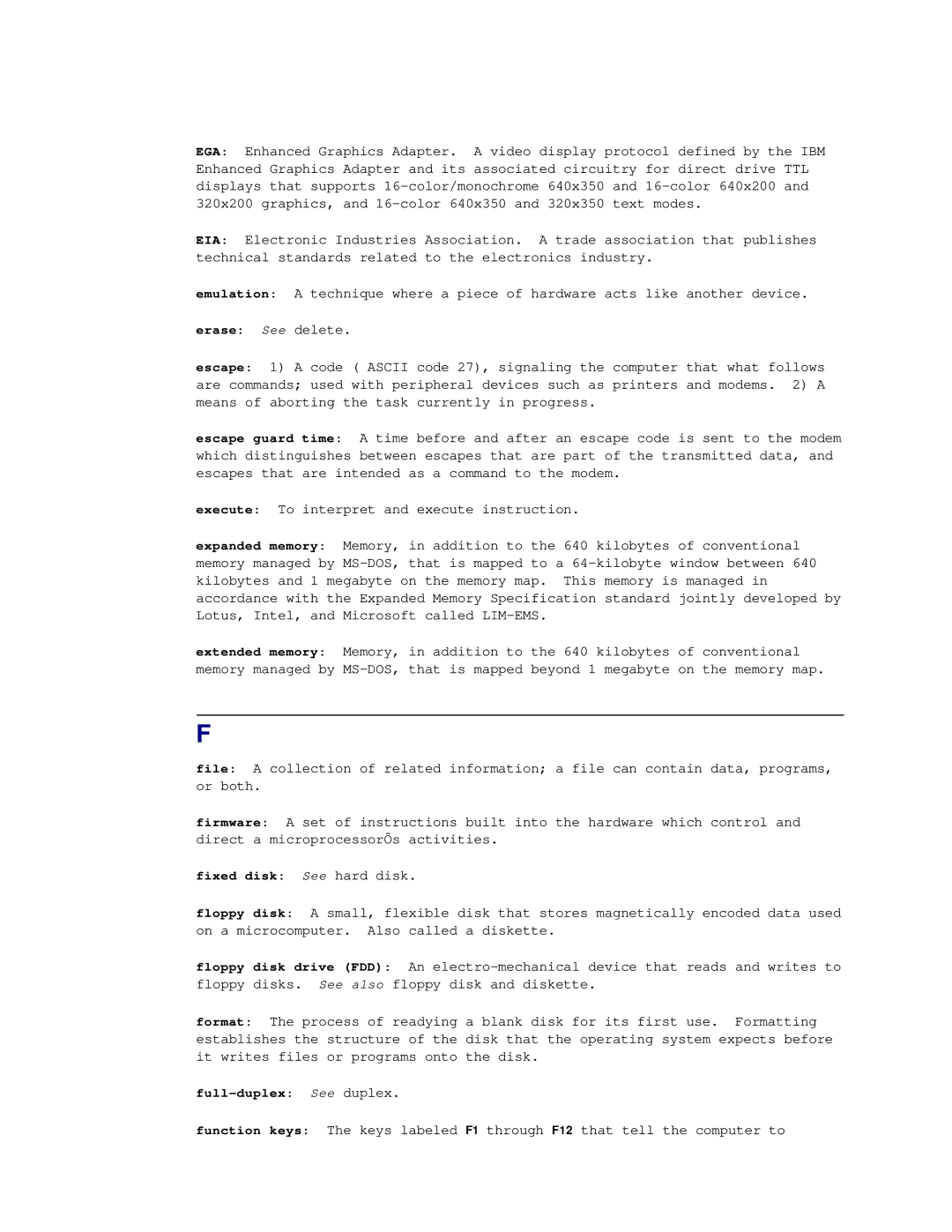EGA: Enhanced Graphics Adapter. A video display protocol defined by the IBM Enhanced Graphics Adapter and its associated circuitry for direct drive TTL displays that supports
EIA: Electronic Industries Association. A trade association that publishes technical standards related to the electronics industry.
emulation: A technique where a piece of hardware acts like another device.
erase: See delete.
escape: 1) A code ( ASCII code 27), signaling the computer that what follows are commands; used with peripheral devices such as printers and modems. 2) A means of aborting the task currently in progress.
escape guard time: A time before and after an escape code is sent to the modem which distinguishes between escapes that are part of the transmitted data, and escapes that are intended as a command to the modem.
execute: To interpret and execute instruction.
expanded memory: Memory, in addition to the 640 kilobytes of conventional memory managed by
extended memory: Memory, in addition to the 640 kilobytes of conventional memory managed by
F
file: A collection of related information; a file can contain data, programs, or both.
firmware: A set of instructions built into the hardware which control and direct a microprocessorÕs activities.
fixed disk: See hard disk.
floppy disk: A small, flexible disk that stores magnetically encoded data used on a microcomputer. Also called a diskette.
floppy disk drive (FDD): An
format: The process of readying a blank disk for its first use. Formatting establishes the structure of the disk that the operating system expects before it writes files or programs onto the disk.
function keys: The keys labeled F1 through F12 that tell the computer to
